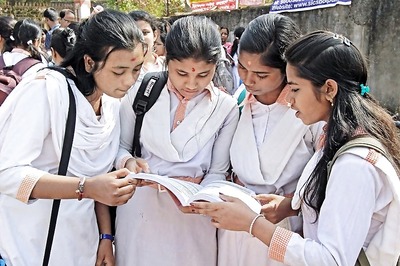
views
Voting for the 70-seat Delhi Assembly or Delhi Vidhan Sabha will be held in a single phase on February 8. Counting of votes and results of the Delhi Assembly election will be announced on February 11. The much-awaited Delhi Vidhan Sabha election 2020 will see three major parties Arvind Kejriwal led-Aam Aadmi Party (AAP), Bharatiya Janata Party (BJP) and Congress fight it out to form the next government in the national capital.
In the Delhi Assembly election, a little over 1.46 crore eligible voters will exercise their right to franchise. The Election Commission of India (ECI) has said that 13,750 polling booths will be set at 2,689 locations for Delhi Assembly election 2020.
Of the total electorates, many will be exercising their right to vote for the first time. Notably, the eligible age for voting in India is 18 years and above.
One of the foremost things that an eligible voter should keep in his/her mind is that to vote, their name should appear in the voter list. Once your name is there, find out the booth in which you will have to visit to cast your vote.
Here is a step-by-step guide on how to vote
Visit the polling booth during the time of vote, which is usually 7 am to 5 pm. Once you enter the booth, the polling booth officer will check your name on the voter list and verify the same from your voter identity card.
After this the second polling officer in the booth will ink either of your index fingers and issue you a slip. You will be asked to sign against your name in the register, which is Form 17A.
You will then be asked to go to third polling officer at your polling booth where you will be asked to handover the slip given to you and also show the inked finger. The officer, after checking, will allow you to proceed to the EVM or the electronic voting machine.
On the EVM, voters will find blue buttons against which the name of the candidate in the fray from the constituency and his/her party will be listed.
Press the button against the candidate whom you wish to vote for.
After you press the button, a light next to the name of the candidate and his/her party will glow along with a beep sound indicating that your vote has been accepted.
The name of the candidate and his/her party symbol will then be displayed in the screen of the VVPAT (voter-verified paper audit trail) for seven seconds after which the slip drops into the sealed VVPAT box.
The entire process will help the voter verify that he/she has cast his/her voter rightly.
If there is any inconsistency or discrepancy between the button you have pressed on the EVM and VVPAT slip, lodge a complaint with the presiding polling officer.
Voters should not use their phone and talk to anyone inside, apart from the polling booth officers inside the polling booth.
They should also not tell anyone about which party or candidate they have cast their vote for.
Also, make sure that no one in the polling booth is influencing you to cast your vote in favour of any particular candidate or party. If so happens, inform the polling officer or security personnel.




















Comments
0 comment